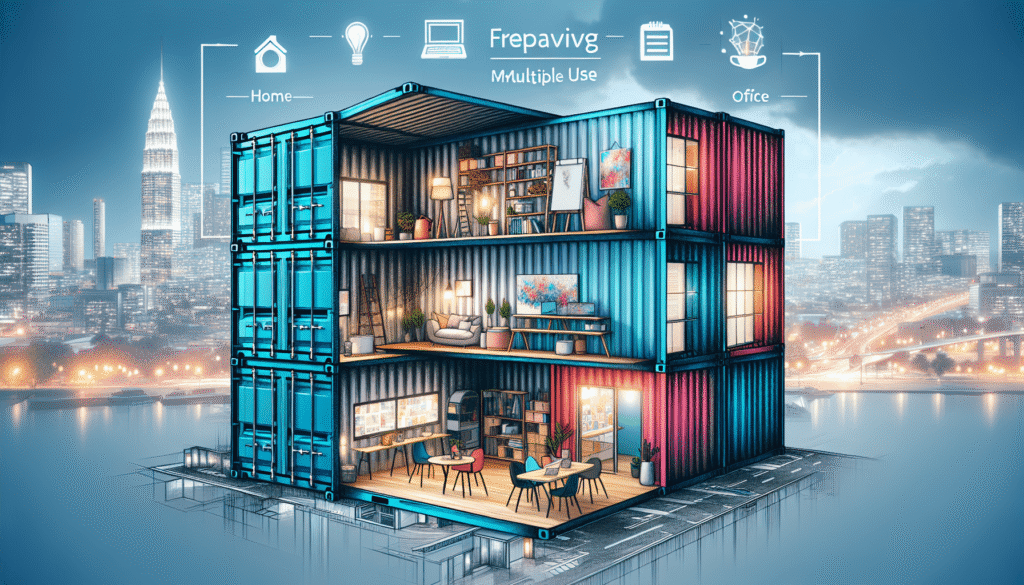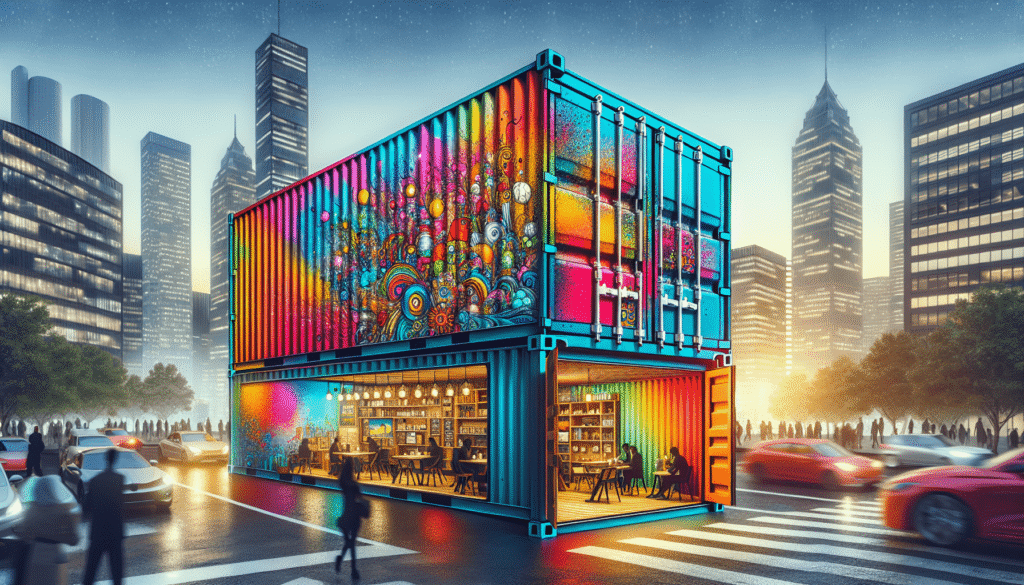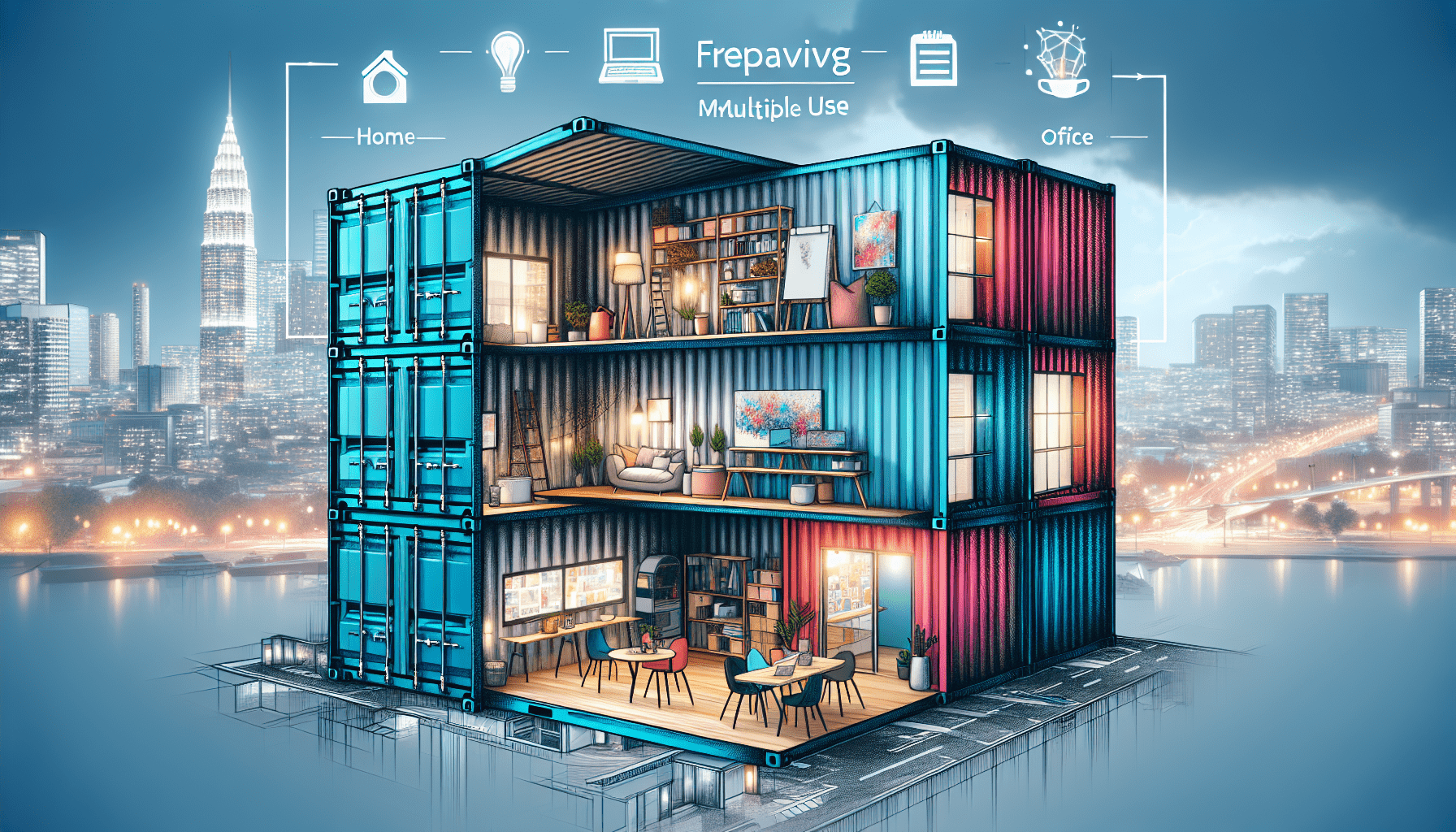Have you ever stopped to consider the untapped potential lying within the humble shipping container? You might think of them as just metal boxes for transporting goods across the oceans, but there’s so much more to explore when you consider their dimensions, particularly how wide they can be. Let’s take an engaging journey into the world of container versatility and discover the different possibilities they offer.

Understanding the Basics: How Wide are Shipping Containers?
Shipping containers come in a variety of widths that can affect how you utilize them. The standard width of most containers is 8 feet. However, there are variations such as the high cube containers which might offer more space due to additional height rather than width. That said, the width of a container is a vital factor when planning any project that involves using one.
The Importance of Width
Why does width matter? Well, how wide a container is can have significant implications on how space is utilized within it. Imagine trying to fit shelves or furniture inside; every inch can make a crucial difference in your planning and execution. This is especially true when considering how these metal giants are repurposed for uses beyond just shipping.
Standard vs. Custom Widths
While the industry’s standard width is typically 8 feet, there are custom widths available for those with specific needs. Some custom containers can be as wide as 10 to 12 feet. These variations mean you have plenty of room to explore according to your specific requirements. Remember, though, wider containers might present challenges such as transportation logistics since they may not fit standard shipping lanes or roads.
Innovative Uses for Wide Shipping Containers
With a basic understanding of container width, let’s dive into how these dimensions open up a world of opportunity. From creative architectural endeavors to efficient storage solutions, the wide shipping container is a Swiss Army knife of spatial innovation.
Transforming Spaces: Shipping Container Architecture
The architectural world has embraced shipping containers for their robustness and adaptability. Thanks to their varying widths, containers can be configured in countless ways to create stunning structures, from low-cost housing to sleek, modern offices.
Residential Uses
More and more people are considering container homes for their affordability and sustainability. A wider container can provide the living space and comfort you might need. Imagine fitting in all the necessities of a home—kitchen, bedroom, bathroom—within a sleek, modular design.
Commercial Applications
Office spaces and small businesses have taken to using wide shipping containers as well. Their industrial aesthetic can be quite appealing, and the width can allow for an open-layout office or cozy cafe that’s both trendy and functional.
Event Spaces and Pop-Up Shops
Quickly becoming a sensation in retail and marketing, pop-up shops housed in containers can capitalize on the spacious interiors provided by wider designs. The ability to quickly set up, tear down, and move to another location offers brands versatility and lower operating costs.
Farming and Greenhouses
The agricultural sector is not left out when it comes to innovative uses for containers. Wider containers can be transformed into greenhouses, providing the perfect environment for growing plants with controlled lighting and heating, especially in urban environments.
The Technical Side: Modifying Container Width
You might wonder about the feasibility of modifying the width of a shipping container to suit particular needs. While challenging, it is indeed possible with expert engineering and construction skills.
Expanding a Container’s Width
Modifying a container to expand its width involves intricate processes including cutting, welding, and ensuring structural integrity is maintained. This can allow even the standard 8-foot-wide containers to be expanded to suit unique functions.
Challenges in Modifying Shipping Containers
Structural modification is not without its hurdles. Not only do you have to factor in the logistics of physically changing the container, but also the compliance with building codes and transportation restrictions. This requires experienced builders and relevant permits to ensure everything is up to spec.
Optimizing Space: Interior Configurations of Wide Containers
An empty container is akin to a blank canvas, ready to be transformed into whatever you envision. Here’s how you can optimize the space within, thanks to its width.
Interior Design Basics
With a wider container, you have more room to play with design elements. You can include elements like proper insulation, sufficient lighting, and even multi-level configurations if needed. Planning is crucial to maximizing efficiency and aesthetics.
Storage Solutions
Whether used for residential, commercial, or industrial purposes, how you configure the interior for storage is vital. Shelving systems can be adjusted to utilize every bit of space, ensuring that capacity is not wasted.
Creating Functional Zones
Incorporate dividers and furniture to create distinct zones within the container. Whether it’s separating a living area from a workspace or creating specific sections for different products, functional zoning can dramatically increase the usability and organization of the space.

Economic and Environmental Benefits of Using Wide Containers
Perhaps one of the most compelling reasons to use shipping containers, regardless of width, is their economic and environmental advantages.
Eco-Friendly and Sustainable
The reuse of shipping containers aligns perfectly with sustainable architectural practices. By repurposing containers, you reduce the demand for new construction materials, which in turn decreases carbon footprints and promotes recycling.
Cost Efficiency
Containers are generally cost-efficient compared to traditional building materials. Even if you factor in modifications and interior build-outs, the initial savings often outweigh the costs incurred when constructing from scratch.
Long-Term Durability
Made from steel, these containers are designed to withstand harsh maritime conditions, making them durable and long-lasting. Their resilience means less frequent repairs or replacements, further driving down costs over time.
Real-World Examples of Wide Container Usage
It’s helpful to look at real-world examples to put into perspective how wide containers are used effectively. These examples can inspire you with practical applications and help visualize the potential of your container project.
Urban Revitalization Projects
Cities across the globe have initiated projects using containers to revitalize urban landscapes. Parks, shopping centers, and communal spaces have been adorned with these wide shipping containers, providing unique and functional amenities.
Disaster Relief and Emergency Shelters
In times of crisis, rapidly deployable shelters are critical. Wide containers serve as ideal emergency housing solutions due to their strength and ease of transport.
Art and Culture Centers
Not only functional, but containers can also be a canvas for art. Wide containers are occasionally used as art installations, with the interior and exterior serving as exhibition spaces for artists to showcase their work.
Considerations for Using Wide Shipping Containers
Before jumping into using a wide shipping container for your project, there are several considerations to keep in mind. This ensures a smooth process free of unforeseen complications.
Permits and Regulations
Each locality may have different regulations concerning the use of shipping containers. Check with your local government on zoning laws, building codes, and any necessary permits.
Transportation and Placement Logistics
Transporting a wider container can present logistical challenges including road transport restrictions and placement during delivery. It’s essential to have a plan for moving and placing your container efficiently.
Weatherproofing and Insulation
Whether you’re using the container for living purposes or storage, ensure it’s weatherproof and has adequate insulation. This is crucial for maintaining a comfortable interior climate and protecting the contents inside.
Conclusion: Your Pathway to Creativity and Functionality
From shipping goods to creating habitable spaces, the versatility of shipping containers, especially wide ones, is truly transformative. With awareness of their dimensions and creative potential, you are well-equipped to embark on your own project. Remember, whether it’s a home, an office, or a commercial enterprise, a wide shipping container can be shaped to meet your needs with flair and efficiency. So consider harnessing the broader side of these extraordinary metal structures and watch your ideas come to life.
Now, it’s your turn to imagine and build. Let the versatile width of shipping containers guide you in constructing the future you envisage!

